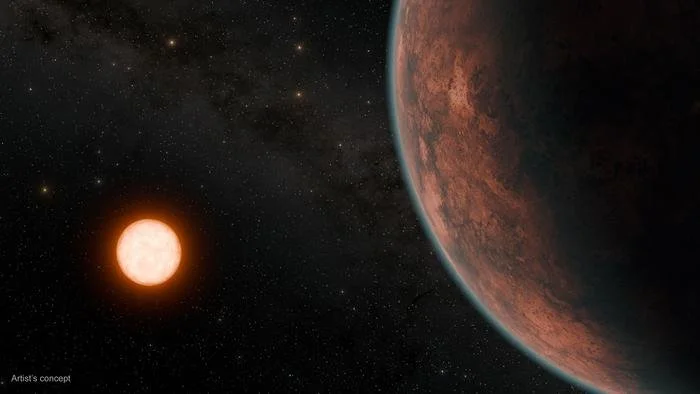Gliese 12 b, which orbits a cool red dwarf star located just 40 light-years away, promises to tell astronomers more about how planets close to their stars retain or lose their atmospheres. In this artist’s concept, Gliese 12 b is shown retaining a thin atmosphere. Credit: NASA/JPL-Caltech/R. Hurt (Caltech-IPAC)
Two international teams of astronomers have discovered an Earth-like planet only 40 light-years away.
“We’ve found the nearest, transiting, temperate, Earth-size world located to date,” said Masayuki Kuzuhara, a project assistant professor at the Astrobiology Center in Tokyo, who co-led one research team with Akihiko Fukui, a project assistant professor at the University of Tokyo. “Although we don’t yet know whether it possesses an atmosphere, we’ve been thinking of it as an exo-Venus, with similar size and energy received from its star as our planetary neighbor in the solar system.”
The planet’s host star, called Gliese 12, is a cool red dwarf about 27% of the Sun’s size in the constellation Pisces.
The newly discovered world, named Gliese 12 b, orbits every 12.8 days and is Earth’s size or slightly smaller — comparable to Venus. Assuming it has no atmosphere, the planet has a surface temperature estimated at around 107 degrees Fahrenheit (42 degrees Celsius).
Astronomers say that the diminutive sizes and masses of red dwarf stars make them ideal for finding Earth-size planets. A smaller star means greater dimming for each transit, and a lower mass means an orbiting planet can produce a greater wobble, known as “reflex motion,” of the star. These effects make smaller planets easier to detect.
The lower luminosities of red dwarf stars also means their habitable zones — the range of orbital distances where liquid water could exist on a planet’s surface — lie closer to them. This makes it easier to detect transiting planets within habitable zones around red dwarfs than those around stars emitting more energy.
The distance separating Gliese 12 and the new planet is just 7% of the distance between Earth and the Sun. The planet receives 1.6 times more energy from its star as Earth does from the Sun and about 85% of what Venus experiences.
“Gliese 12 b represents one of the best targets to study whether Earth-size planets orbiting cool stars can retain their atmospheres, a crucial step to advance our understanding of habitability on planets across our galaxy,” said Shishir Dholakia, a doctoral student at the Centre for Astrophysics at the University of Southern Queensland in Australia. He co-led a different research team with Larissa Palethorpe, a doctoral student at the University of Edinburgh and University College London.
Both teams suggest that studying Gliese 12 b may help unlock some aspects of our own solar system’s evolution.
